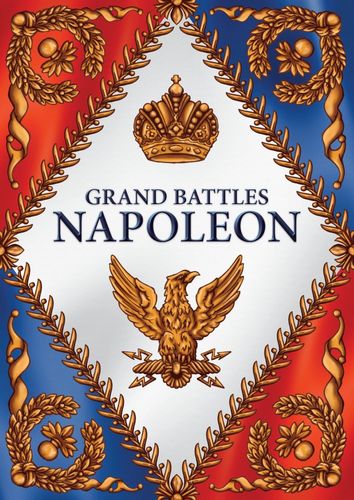|
Advertisement
|
Grand Battles Napoleon

DescriptionGrand Battles Napoleon is a set of rules for recreating Napoleonic battles with model soldiers. Players can play GBN using any scale from 6mm all the way up to 28mm miniatures and there are guidelines for gaming in the various scales. Players take on the role of army or corps commanders. Each player usually commanding around four to five divisions, with each division composed of between two to seven units. Thus the average size of a game is a corps + assets depending on which nation you are using. The game is driven by two important, and to my mind exciting mechanisms, command initiative and response. Both these mechanisms make the game completely interactive at all times, inspired by Koenig Krieg. Grand Battles Napoleon is definitely not a you-go-I-go game. It is very important that players understand the function of initiative in this set of rules as it governs most of the actions that occur during a turn. Actions are not sequential, neither are they simultaneous. Instead commanders test initiative several times during the turn. The player who wins the initiative test may activate one of his divisions or force his opponent to activate one of their divisions instead. Both players roll for initiative round after round until all units on both sides have had a chance to act. In this way each player is kept “in the game” at all times, with each general tied to their initiative, command ability and the important decision to strike now or force their opponent to act instead! The second exciting mechanism is response. Response is divided between command response and unit response. Commanders need to perform response tests if they wish to perform sweeping grand tactical orders, maintain command control should they find themselves outside command range of their corps, wing or army general or to steady the troops from becoming demoralised as casualties in the division mount. Unit response allows your troops to act out of turn and react to movement within their zone of control or when being charged. So that even within the other player’s activation the non acting player is never really out of the game. You will be will be able to re-fight historical battles, or play any one of 10 points based missions from Grand Battles Napoleon and Legion d’honneur supplement. Legion d'Honneur are our free campaign and Big Bash rules, suitable for running tournaments, big multi-day games and linked campaigns. Units act via operations. The types and amount of operations a unit may perform are defined by the type of unit, is it cavalry, infantry, skirmishers, the units national character, i.e. does the infantry prefer fighting in lines or column, and the quality of the troops, are they guards or militia? So in the immortal words of Marshal Gebhard von Blücher, "Raise the flag high my brave lads. Forwards to victory!" —description from the publisher Game DiscussionsAdd CommentYou need to be logged in to comment. Insert Bullet List Please enter at least one item. Item: Item: Item: Item: Item: Insert Numeric List Please enter at least one item. Item: Item: Item: Item: Item: Insert Link Please enter the link of the website Optionally you can add display text Insert Email Please enter the email address Optionally add any display text Insert Image Please enter the link of the image Insert YouTube Video Please enter the link of the video Marketplace | ||||

Comments (0)